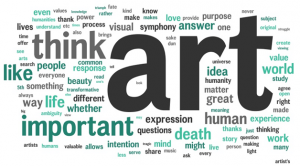First Unit Of Inquiry
(27 July – 2 September, 2016)

| Central Idea | Arts examine feelings, explore social issues, entertain and kindle imagination. |
|
Lines of inquiry |
|
| Key Concepts | Function, Reflection and Perspective |
Resources
- Hip Hop – http://www.youtube.com/watch?v=zStxFi4aOlI
- Jazz – http://www.youtube.com/watch?v=7Hsu01tBZS8
- Classical – http://www.youtube.com/watch?v=wLkjMLdLf3s
- Blues – http://www.youtube.com/watch?v=YQHLh_QSnxE
- Folk – http://www.youtube.com/watch?v=3ngKKxizoAY
- Rock – http://www.youtube.com/watch?v=s13cpWz2abE
Poem and video that goes with the poem:
- http://totallyhistory.com/art-history/famous-paintings/
- http://gardenofpraise.com/art.htm
- http://www.poetryfoundation.org/features/video/281
Resources for Figurative Language:
- Simile and Metaphor – https://www.youtube.com/watch?v=uoSBVNUO2LU
- Alliteration – https://www.youtube.com/watch?v=DGJu6LzUfYM&list=PLNhcN6HeKKWR2SVcO2s3OJ5awCWwLclQN&index=7
- Hyperbole – https://www.youtube.com/watch?v=LYy4UQ8plJQ
- Personification – https://www.youtube.com/watch?v=JMKgLnhelX4
- Onomatopoeia – https://www.youtube.com/watch?v=s6i3WQNqUWk
- https://www.youtube.com/watch?v=f1b5kCvVBo8
Learning Outcomes:
- How We Express Ourselves
- Formulate and ask questions about the past, the future, places and society
Active Living
Attention to technique and regular practice can improve the effectiveness of our movements.
- Demonstrate greater body control when performing movements
- Plan, perform and reflect on movement sequences in order to improve
Creating in Dance
We make connections between our artwork and that of others to extend our thinking.
- Experience varying groupings when performing dance, including ensemble performance
Creating in Music
We can explore our personal interests, beliefs and values through arts.
- Read and write music using non-traditional notation
- Express themselves as individuals through musical composition
Creating in Visual Arts
We act on the responses to our artwork to inform and challenge our artistic development.
- Identify factors to be considered when displaying an artwork
Identity
A person’s self-concept is influenced by how others regard and treat him or her.
- Reflect on their own cultural influences, experiences, traditions and perspectives, and are open to those of others
- Use understanding of their own emotions to interact positively with others
Listening and Speaking
The grammatical structures of a language enable members of a language community to communicate with each other.
- Organize thoughts and feelings before speaking
- Realize that grammatical structures can be irregular and begin to use them appropriately and consistently
- Recognize that different forms of grammar are used in different contexts
Number
The operations of addition, subtraction, multiplication and division are related to each other and are used to
process information to solve problems.
Constructing meaning
- Model numbers to thousands or beyond using the base 10 place value system
- Number notation and place values(ten thousands, thousands, hundreds, tens, ones)
- Read and write numbers (up to 100000) in numerals and in words
- Compare and order numbers
- Round off numbers to the nearest 10 or 100
- Use the approximation symbol (≈)
- Model multiplication and division of whole numbers
- Use the language of multiplication and division , for example, factor, multiple, product, quotient, prime numbers, composite
Transferring meaning into symbols
- Develop strategies for memorizing addition, subtraction, multiplication and division number facts
- Describe mental and written strategies for multiplication and division
Applying with understanding
- Use whole numbers up to thousands or beyond in real life situations
- Use fast recall of multiplication and division number facts in real- life situations
Pattern and Function
By analysing patterns and identifying rules for patterns it is possible to make predictions.
Constructing meaning
- Understand that patterns can be analysed and rules identified
Transferring meaning into symbols
- Describe the rule for a pattern in a variety of ways
- Represent rules for a pattern using words, symbols and tables
Applying with understanding
- Select appropriate method for representing patterns, for example using words, symbols and tables
- Use number patterns to make predictions and solve problems
Reading
Identifying the main ideas in the text helps us to understand what is important.
- Distinguishing between fiction and non-fiction and select books appropriate to specific purposes
- Understand that stories have a plot; identify the main idea; discuss and outline the sequence of events leading to the final outcome
Responding in Dance
There are different kinds of audiences responding to different arts.
- Reflect on artistic processes in dance achievements and how to incorporate new ideas into future work
Responding in Music
There are different kinds of audiences responding to different arts.
- Sing with accuracy and control focusing awareness on the musical elements
- Sing partner songs
Responding in Visual Arts
There are different kinds of audiences responding to different arts.
- Compare, contrast and categorize artworks from a range of cultures, places and times
- Recognise that different audience respond in different ways to artwork
- Provide constructive criticism when responding to artwork
Viewing and Presenting
Interpreting visual texts involves making an informed judgment about the intention of the message.
- Identify aspects of body language in a dramatic presentation and explain how they are used to convey the mood and personal traits of characters
- Observe and discuss the choice and composition of visual presentations and explain how they contribute to meaning and impact, for example, facial expressions, speech bubbles, word images to convey sound effects
- Realize that visual presentations have been created to reach out to a particular audience and influence the audience in some way; discuss the effects used and how they might influence the audience
Writing
Writing and thinking work together to enable us to express ideas and convey meaning.
- Write for a range of purposes, both creative and informative, using different types of structures and styles according to the purpose of the writing
- Show awareness of different audiences and adapt writing appropriately
- Check punctuation, variety of sentence starters, spelling, presentation
- Use a dictionary and thesaurus to check accuracy, broaden vocabulary and enrich their writing
Text Type: Drama Script/Poetry
Reading Strategies: Creating mental images, Using background knowledge, & Inferring
ICT Skills: Creating, Collaborating, Organizing
